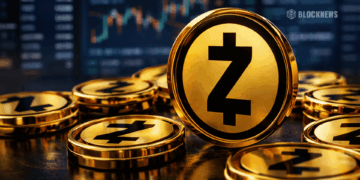Stablecoins play a significant role in the crypto market as investors and traders use them to hedge against price volatilities that regularly define cryptocurrencies. However, the collapse of Terra’s algorithmic stablecoin UST in May reduced the credibility of these cryptos amongst investors.
Despite this, new stablecoins continue to be introduced to the market. The latest development comes from a popular decentralized exchange (DEX) Curve Finance, which was at the center of the 2021 stablecoin wars, that is getting ready to launch its native stablecoin – crvUSD.
Curve’s Dollar-pegged crvUSD
Curve Finance is an automated market maker (AMM) with $5.64 billion in total value locked on its smart contracts protocol, according to data from DefiLlama. On Tuesday, the crypto finance developers released the initial code for its much-awaited stablecoin called crvUSD. The JavaScript code library will act as an interface to the stablecoin’s smart contracts, which have not yet been deployed.
The Curve protocol uses smart contracts that allow users to swap stablecoins at low fees and with low slippage, as detailed in its whitepaper. Depositors on the platform earn an annual yield of up to 4% from one of the several pools found on the platform. This equals about $5.64 billion worth of ETH-based tokens used on the platform.
CRV is the native token of the Curve DEX and is used as yield farming rewards are given to liquidity providers on the platform. CRV tokens can also be converted into vote-escrowed CRV (veCRV) tokens which allow users to earn higher bonuses and fees, receive airdrops and participate in the governance and maintenance of the platform.
Curve finance made public its plans to release a dollar-pegged stablecoin in June, but the details were scanty at the time. The intentions to develop the stablecoin were confirmed by founder Michael Egorov in August, who said it was “possible” that crvUSD would be launched in September.
crvUSD Elicits Different Views
Availability of the code to the public has triggered excitement within the DeFi sector, with supporters of the space working toward understanding what crvUSD is and what it means for the crypto industry.
The co-founder of the Alchemix loan protocol Scoopy Trooples weighed in on the matter, saying, “If crvUSD is what I think it is, I am HYPE.” Trooples also affirmed his belief that the stablecoin will have utility as it will be borrowable against liquidity pool (L.P.) tokens for the two largest pools found on the Curve platform – 3pool and tricrypto.
Daniel Zlotin, a well-known DeFi developer at Orbs, wrote in a Telegram message that he believes crvUSD is an “interesting development, as we haven’t yet seen a stablecoin issued by a major DEX. Connecting a stablecoin with a viable [DeFi] platform could open up some interesting possibilities in terms of new models (such as using L.P. tokens as part of the backing system).” Zlotin was quick to caution that implementing such a concept would pose some challenges.
A vocal supporter of the Curve ecosystem, CryptoCondom, has also commented on the matter. Replying to @TaikiMaeda2’s post on crvUSD news, CryptoCondom said:
“Imagine an over-collateralized stable backed by tricrypto that auto liquidates to USDT as your collateral percentage drops and then re-enters as it increases. Essentially: You get liquidated into USDT as ETH and BTC drop, but then buy back more ETH and BTC as prices go up.”
He suggested that Curve’s stablecoin will enable the users of the DEX to trade between these assets on tricrypto.
Conclusion
The ongoing development of a stablecoin by Curve Finance is a good move, mainly when stablecoins are under pressure and face strict regulations. For example, the U.K. has proposed legislation to regulate stablecoins that will be part of the financial services and markets bill. In the U.S., Treasury Secretary Janet Yellen has called upon congress to formulate legislation to regulate regulations after the TerraUSD/LUNA debacle in May.














